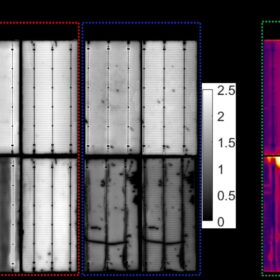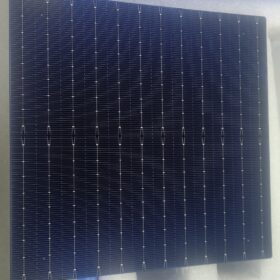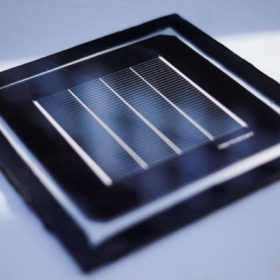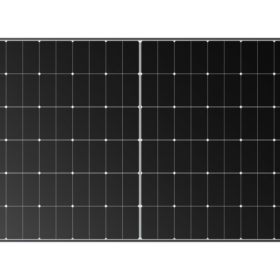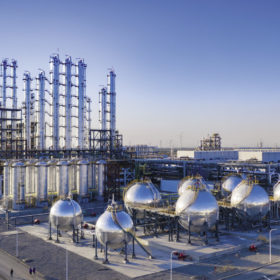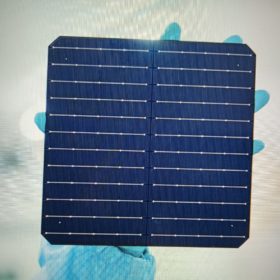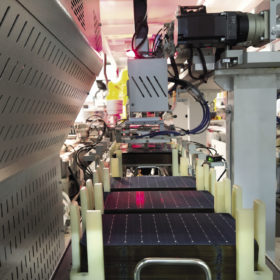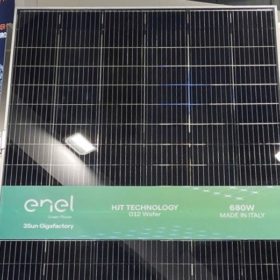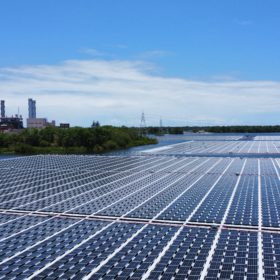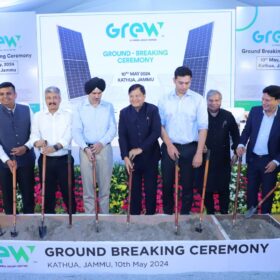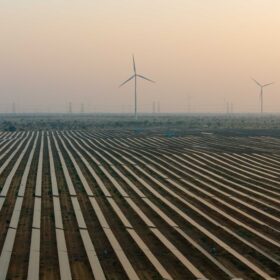Scientists warn of heat-induced failure risks in HJT glass-backsheet PV modules
University of New South Wales researchers have identified four failure modes caused by damp heat in heterojunction solar panels with a glass-back sheet configuration. The failures could result in power losses ranging from 5% to 50%.
Solar testing group warns of degradation risk for TOPCon
The Renewable Energy Test Center (RETC) raised the issue of ultraviolet-induced degradation of the trending technology in its PV Module Index 2022.
Cosmic PV Power builds 600 MW solar module factory
The Indian manufacturer expects to start production from its second factory by June this year, bringing its total solar panel manufacturing capacity to 850 MW.
Meyer Burger to commercialize 29.6%-efficient perovskite tandem solar cells
Meyer Burger is working with several research institutes in Switzerland and Germany to integrate perovskite tandem technology into its manufacturing processes.
Longi launches all new back contact module, promising 22.8% efficiency
Longi has launched a series of modules featuring an all-new hybrid passivated back contact cell technology, with which it claims a maximum module efficiency of 22.8% in mass production. It will initially offer the modules in 54, 60, 66 and 72 cell formats, targeting rooftop and distributed generation applications.
Global polysilicon capacity could hit 536 GW by end of 2023
Clean Energy Associates said in a new report that it expects polysilicon production capacity to exceed PV installations next year.
“n-type module launch reflects our commitment to India”
China’s Trina Solar has shipped more than 8 GW of solar modules to India. It is looking to strengthen its foothold in the market with the launch of n-type PV modules.
Copper is the new silver lining
As the PV industry scales to annual terawatt-level production to rapidly curtail the world’s emissions, it will become more challenging to continue the cost reduction trajectory. Increasing module production from current levels of 200 GW to 300 GW to several terawatts each year will consume significantly more material resources than the industry currently uses. This will require consideration of the additional materials to be sourced, writes Alison Lennon, chief scientist at Sundrive Solar and professor at the UNSW’s School of Photovoltaic and Renewable Energy Engineering.
Adani targets 10 GW of polysilicon-to-solar module capacity by 2025
India’s Adani Solar will expand its PV cell and module manufacturing capacity to 10 GW per year by 2025, with backward integration up to the polysilicon stage.
Enel unveils 680 W n-type heterojunction solar panel for utility-scale applications
Enel Green Power’s new solar panel has average efficiencies ranging from 22.6% to 22.9% and a temperature coefficient of -0.24% per degree Celsius. It is based on an n-type solar cell with G12 format and a power conversion efficiency of 24.6%.
